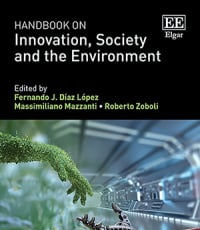
Green Economy Model (GEM)
GEM is a systems model, customized to the country context using a multi-stakeholder, co-creation approach. It is designed to inform decision making towards sustainability, highlighting outcomes of action and inaction across sectors, dimensions of development, and economic actors.
GEM has been customized to more than 50 countries in the past 15 years, to support policy processes and investment decisions in the context of sustainable development, climate mitigation, adaptation, and circular economy.
From the creation of a shared understanding of system dynamics


To the evaluation of the multi-dimensional impacts of action

Multi-sector
GEM includes a variety of sectors that are necessary to carry out a systemic analysis of existing trends and proposed interventions.
These include, in the 2023 version, 45 modules grouped in 14 sectors.
Each country version of GEM is fully customized to sectors and policies of relevance.

Multi-dimensional
GEM forecasts outcomes of policy and investment across (i) sectors and (ii) actors, (iii) dimensions of development, (iv) over time (semi-continuous simulation from 2000 to 2070) and (v) in space (with GIS).

Multi-method
GEM was conceived using Systems Thinking (ST), built using System Dynamics (SD). It integrates social, economic and environmental drivers of change. It is often coupled with sectoral models (e.g. energy optimization) and with spatially explicit models (e.g. InVEST for full alignment with the SEEA EA).

Designed to inform policymaking
GEM simulates "what if" scenarios to learn about how the systems responds to interventions and external influences. Generates economic and financial CBAs (by project and policy package), to inform decision making from policy formulation to investment plans.

Designed and customized with a co-creation approach
GEM is co-created with project partners and local stakeholders. A 5-step process is implemented, starting with problem identification and ending with policy analysis. Causal Loop Diagrams (CLDs) are used as a tool to create a shared understanding of the dynamics to analyze.

Support to climate mitigation and adaptation
GEM includes several technologies for climate mitigation; it incorporates a comprehensive range of climate change impacts on human health, infrastructure, production and natural capital, and related adaptation options. Climate forecasts are downloaded from the EU Copernicus database, for a variety of simulation models and scenarios.
Examples of GEM applications

























